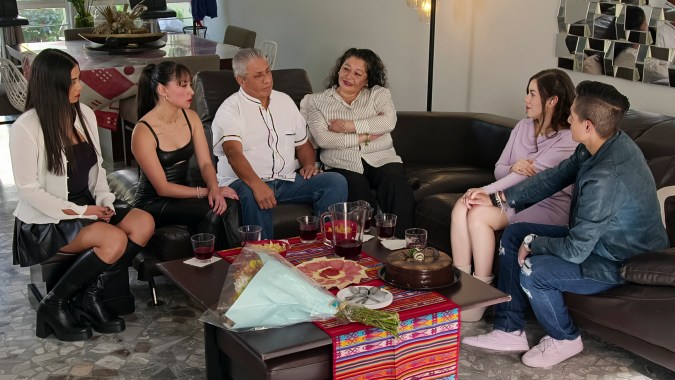Love is Blind: México has just finished its inaugural season with only one couple tying the knot, even though five couples made it to the bachelor and bachelorette parties and four made it to the altar. But perhaps the most important conversation on social media outside of Mexico about the show isn’t about who found love and who didn’t, but about what the participants looked like, and what that says about what kind of country Mexico is.
Because if you’d never been to Mexico and knew nothing about the country, just from watching the show, you’d probably think Mexico was a predominantly white country. And a pretty well-off one, to boot. After all, most of the contestants we see on the show are not just very much white, but very firmly upper middle class, unlike in basically every other version of Love Is Blind, where we’ve seen contestants from all ethnicities and backgrounds. And from the apartments to the places they hang out, and their wedding venues, there is a specific upper-class version of Mexico that is being presented.

When it comes to Love is Blind: México, it’s mainly Whitexicans we’re seeing, a term used to describe Mexicans whose physical appearance is closer to their European ancestry. But the term isn’t just about appearance, it’s also used to describe a subset of the population, according to users online, that are “pretentious” and unwilling to “empathize with Mexicans at large.” And watching the show, it feels like Televisa produced this series instead of Netflix. Because, just like in Love is Blind: México, Televisa also has shown us this version of Mexico for decades across movies and telenovelas, to the point that many people truly believe Mexico is this white.
But even though Mexico itself does not collect data on ethnicity, the information that does exist paints a very different picture, with reported data indicating 62% of the country is Mestizo (Indigenous-Spanish), 21% predominantly Indigenous, 7% Indigenous, and the other 10% falls into an ambiguous other, which statistics indicate is mostly European.

Long story short, Love is Blind: México isn’t a real representation of Mexico.

In Love is Blind: México, the only one who doesn’t really fit this Televisa stereotype is Rene. He has a darker complexion reminiscent of Mestizo Mexicans and seems to be just a doctor from a middle-class family. Ironically, he is the only one who is rejected during the reveal and only returns to the show after Irais changes her mind one episode later.
That means the show almost made it to the weddings with a mostly-white cast. In Mexico. And though people not as familiar with the country might not have noticed how white the show was, Mexicans and people in Latin America have picked up on it.

Comments on social media ran the gamut from people saying it was giving Spain and that the cast felt white-washed.
To people wondering if the issues with Irais and Rene were about him being brown in the first place.

To people straight up saying the show should be called ‘Love is Whitexican’ and pointing out this is what Mexican TV is.
And there was even a person pointing out that there were more dark-skinned people on Love is Blind UK than on Love is Blind: México.

Here’s hoping season 2 of Love is Blind: México does better in its casting if they are renewed. Painting Mexico with such a broad stroke only benefits those who want outsiders to think of the country in one way — or one color.




